Solomon Islands
Photos
8 Photos
Filter Categories
All
Filters
The Solomon Islands consist of two major island groups, the western New Georgia Islands and the eastern Santa Cruz Islands. This Landsat image shows some of the islands of the former group. The nearly circular island in the upper left is Kolombangara. Then, proceeding clockwise, is the large island of New Georgia, and the smaller islands of Vangunu, Tetepare, and Rendova. Located along two geologic plate boundaries, the islands are prone to volcanism, earthquakes, and tsunamis. Image courtesy of NASA.
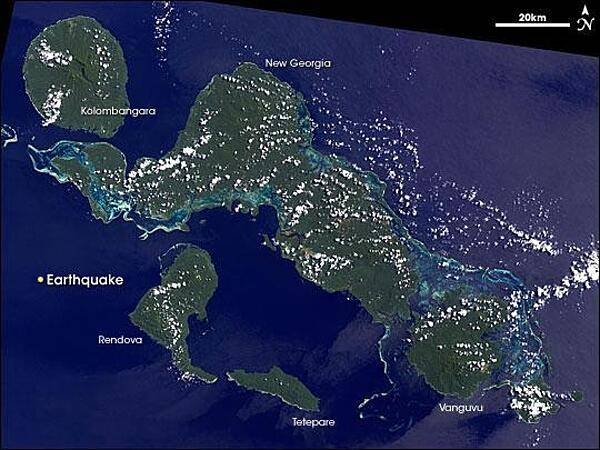
The Solomon Scouts and Coastwatchers Memorial at Honiara, Guadalcanal. The Solomon Scouts and Coastwatchers provided invaluable support and aid to the Allied effort during World War II. Photo courtesy of the US Army/ Staff Sgt. Armando R. Limon.
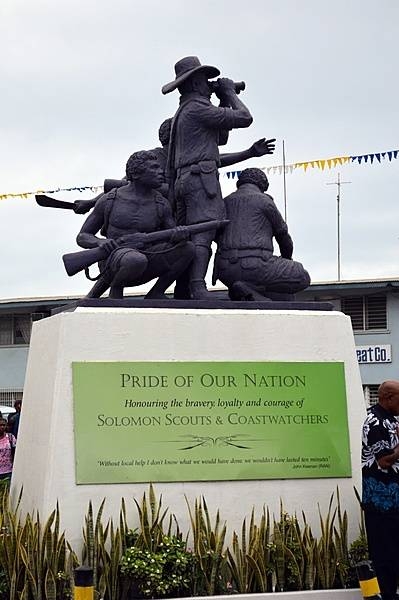
Red Beach was the original landing site of the 1st Marine Division at Guadalcanal on 7 August 1942; this was the Marines first offensive action against the Empire of Japan during World War II. The Marines seized a floatplane base and an airfield under construction. A monument at Red Beach marks the Division’s landing. Photo courtesy of the US Army/ Staff Sgt. Armando R. Limon.
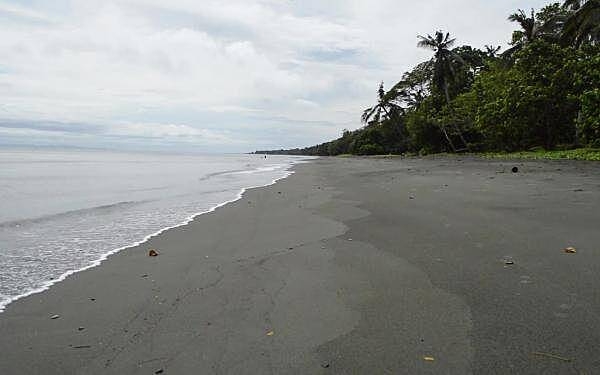
The US Marine Raiders Monument atop Edson’s Ridge, also known as Bloody Ridge and Raiders Ridge, on Guadalcanal. The Battle of Edson's Ridge, 12-14 September 1942, was the second of three separate major Japanese ground offensives during the Guadalcanal Campaign. The Marine 1st Raider Battalion held off repeated assaults by a 6,000-strong Japanese force. While the Marines suffered more than 250 casualties, the Japanese Army sustained a staggering 800 casualties during the two-day battle. Photo courtesy of the US Army photo/ Staff Sgt. Armando R. Limon.
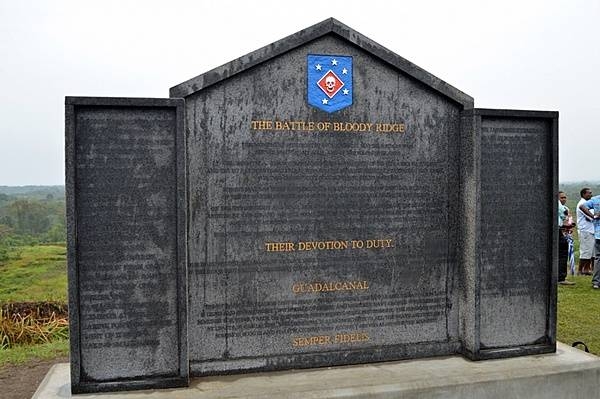
A view from the top of Edson’s Ridge, also known as Bloody Ridge and Raiders Ridge, on Guadalcanal. The Lunga River anchor’s the ridge’s right flank. During the Battle of Edson's Ridge, 12-14 September 1942, the Marine 1st Raider Battalion, led by Lt. Col. Merritt A. Edson, repulsed repeated attacks by the Imperial Japanese Army. Over a two-day period, the combined Marine forces suffered more than 250 causalities, while the Japanese Army sustained a staggering 800 casualties. Photo courtesy of the US Army/ Staff Sgt. Armando R. Limon.
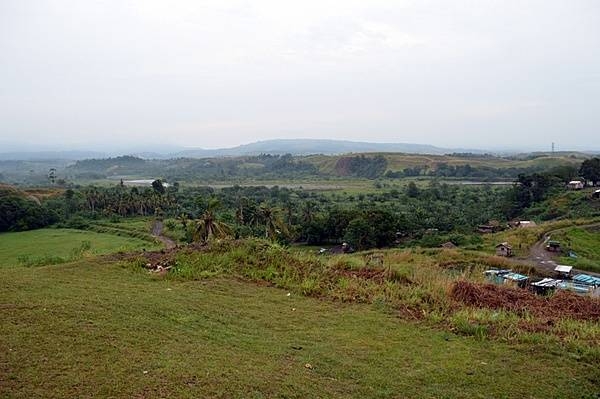
The World War II Guadalcanal American Memorial on Skyline Drive on Guadalcanal overlooks the town of Honiara and the Pacific Ocean. The site, located on the first hill occupied by US forces, honors those Americans and Allies who lost their lives during the Guadalcanal Campaign of World War II (7 August 1942 to 9 February 1943). The memorial consists of a 4-foot square, 24-foot tall pylon on which is inscribed: “This memorial has been erected by the United States of America in humble tribute to its sons and its allies who paid the ultimate sacrifice for the liberation of the Solomon Islands 1942-1943.” The four directional walls point to the four major battle areas. Inscribed on these walls are descriptions of the battles and a listing of the US and Allied ships that were lost. The monument was dedicated on 7 August 1992, the 50th anniversary of the American landing on Guadalcanal. Photo courtesy of the American Battle Monuments Commission.

Rugged grassy ridges known as the Sea Horse and the Galloping Horse can be seen from the top of a hill known as the Gifu or Mount Austen on Guadalcanal. This area was the scene of intense fighting from December 1942 to January 1943 as US Army units fought entrenched Imperial Japanese Army forces in what was the last major land battle of the Guadalcanal Campaign. Photo courtesy of the US Army/ Staff Sgt. Armando R. Limon.

The peak of Mount Austen on Guadalcanal, named the Gifu by Japanese defenders, was the scene of intense fighting between Allied and Japanese forces from December 1942 to January 1943. US Army units fought entrenched Imperial Japanese Army forces in what was the last major land battle of the Guadalcanal Campaign. Photo courtesy of the US Army/ Staff Sgt. Armando R. Limon.
